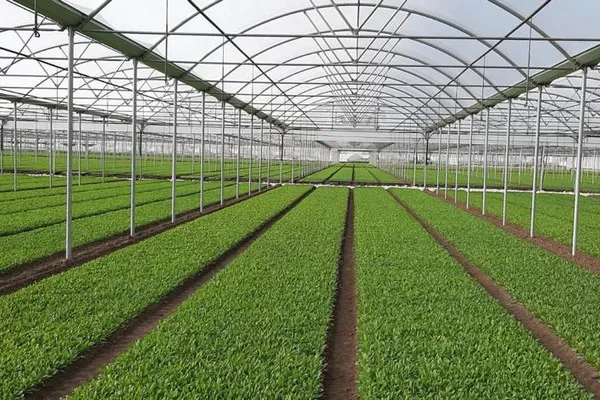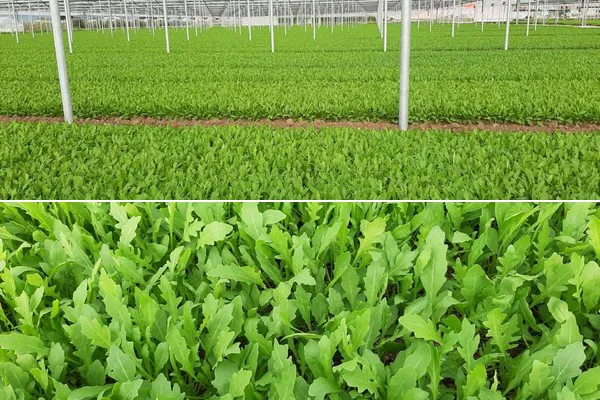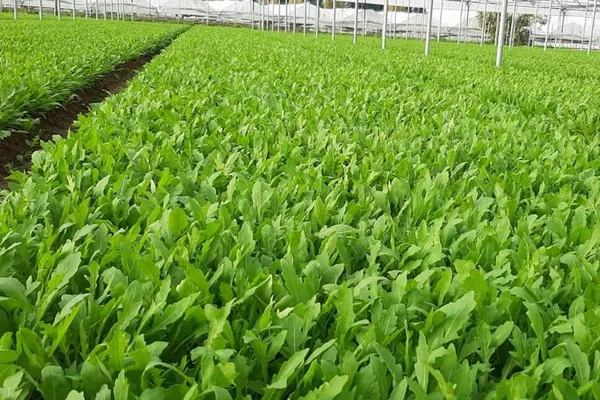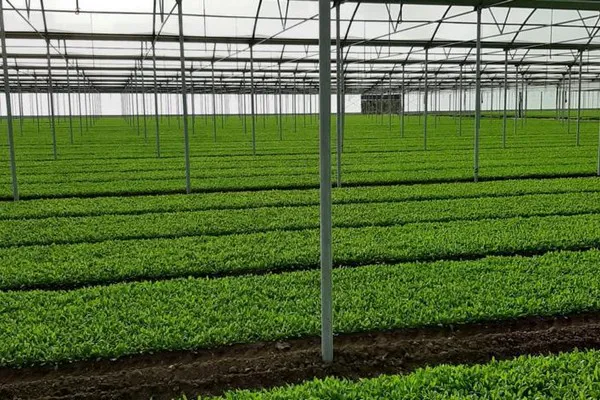Despite the high costs of energy, plant protection, fertilizers, and labor, the production volumes of Italian arugula have largely remained stable compared to last year. However, the cost factor is playing an increasingly significant role in cultivation operations, observes Peter Mair, Sales Manager at Gruppo Mec.
"Farms only cultivate what they can truly sell. This is reflected in the quantities. The market has been precisely served so far. Yet, the slightest fluctuations in cultivation will tighten the supply on the market. This, in turn, leads to high price sensitivity. There was no oversupply in the winter months, only in the past 2 weeks have we seen a bit more produce on the market due to the warm temperatures, so we are looking at a satisfactory season."

Protected cultivation of arugula.
Professionalism and sustainability
Italian arugula is cultivated in three areas: Battipaglia, Latina, and Northern Italy. Battipaglia remains the most important cultivation area for arugula, while Latina is gaining more significance. Mair: "However, Battipaglia is over 100 km south of Latina, and the climate there is milder. In the winter, there is virtually no production in Northern Italy, which is why traders and packaging operations source their goods from the south. Overall, cultivation is becoming more professional and sustainable year by year. Many operations generate their own electricity for refrigeration and packaging machines with solar roofs. Also, the harvesting machines no longer run on diesel or gasoline but are increasingly fully electric. A consistent standard in terms of quality and traceability characterizes our operations."
 Typically, the arugula harvest in Northern Italy picks up from early to mid-April.
Typically, the arugula harvest in Northern Italy picks up from early to mid-April.
Climate change endangers open-ground cultivation
The arugula production of Gruppo Mec spans twelve months a year. The delicate leafy vegetable is consistently grown in foil houses. "This is an incredible achievement, considering that the interior temperature can rise to over 40 degrees in the summer months, and yet we are still able to deliver high and especially consistent quality. In the summer months, open-field operations, such as those in Germany, are facing more and more challenges due to climate change. The changing weather patterns lead to production gaps and endanger the supply of goods, which is not desired by the trade." This has given the demand for Italian arugula another significant boost, according to Mair. Moreover, the sharp taste of Italian arugula is particularly sought after in other European countries.
 In contrast to open-ground cultivation, arugula in Italian greenhouses can be cut twice instead of once per season. At the point of sale, arugula is predominantly offered in the proven 125-gram trays across countries.
In contrast to open-ground cultivation, arugula in Italian greenhouses can be cut twice instead of once per season. At the point of sale, arugula is predominantly offered in the proven 125-gram trays across countries.
Stable consumption in the EU
Gruppo Mec serves numerous customers in retail, wholesale, and industry throughout the EU, including Switzerland. According to Mair, consumption across Europe is very stable. "This is certainly due to the numerous application possibilities in the kitchen, whether on pizza, as decoration, as a flavor enhancer in salad mixes, or as a vegetable in pasta with a cream sauce. Moreover, arugula is, of course, also very healthy."

Images: Gruppo Mec
For more information:
Peter Mair
Gruppo Mec
Tel.: +49 151 54453101
Tel.: +39 333 4700507
Email: [email protected]
www.gruppomec.it
